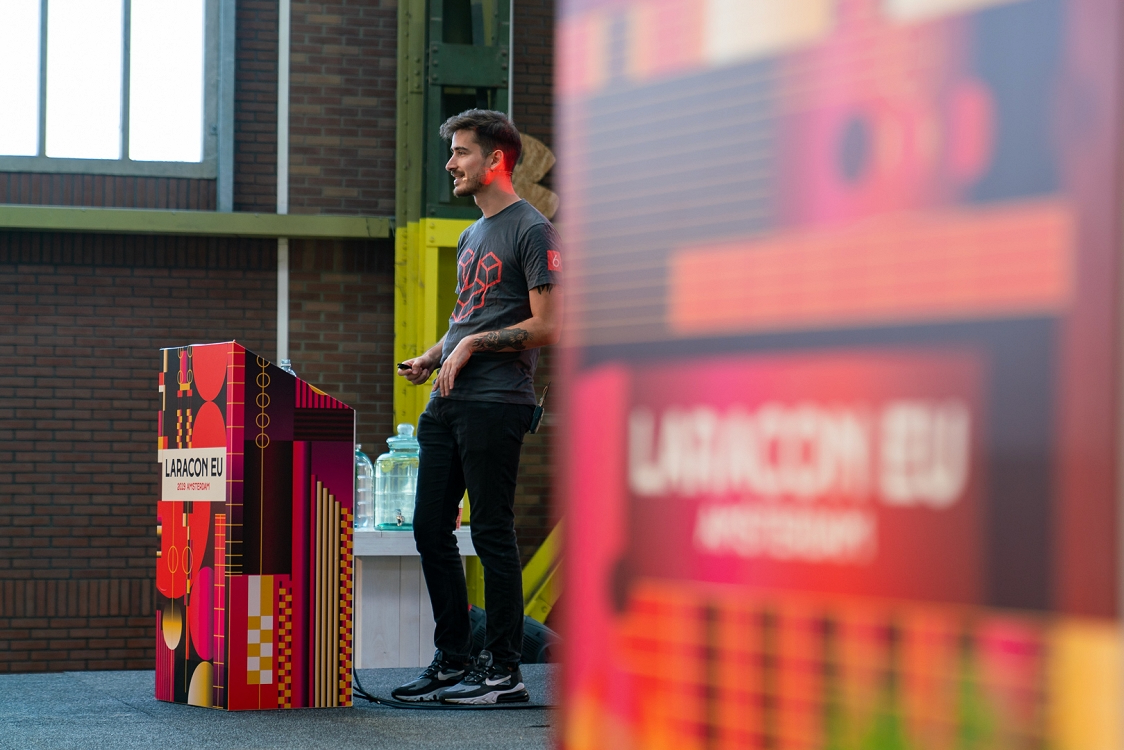Building and Deploying Laravel with Github Actions
First published on February 27, 2020 · Last updated on May 9, 2020
I recently set up Github Actions for Laravel.io so I thought I'd share what it takes to set up a Continuous Delivery pipeline with Github Actions. First, before we continue, I suggest you read this excellent blog post by my buddy Freek Van der Herten where he already explains Github Actions in great detail. A lot of my setup will already be explained there so we'll focus on the most important and different bits and pieces here.
Let's look at the Github Actions workflow yaml file:
name: CI
on:
push:
pull_request:
jobs:
tests:
runs-on: ubuntu-latest
name: Tests
steps:
- name: Checkout code
uses: actions/checkout@v2
- name: Cache dependencies
uses: actions/cache@v1
with:
path: ~/.composer/cache/files
key: dependencies-composer-${{ hashFiles('composer.json') }}
- name: Setup PHP
uses: shivammathur/setup-php@v2
with:
php-version: 7.3
extensions: dom, curl, libxml, mbstring, zip, pcntl, pdo, sqlite, pdo_sqlite
coverage: none
- name: Install Composer dependencies
run: composer install --prefer-dist --no-interaction --no-suggest
- name: Install NPM dependencies
run: npm install
- name: Compile assets
run: npm run production
- name: Execute tests
run: vendor/bin/phpunit --verbose
- name: Deploy
if: github.ref == 'refs/heads/master'
run: curl ${{ secrets.ENVOYER_HOOK }}?sha=${{ github.sha }}
The main difference with a package setup is that we don't do matrix builds. We only test with the specific setup from our production environment. Laravel.io still runs on PHP 7.3 so we only need to run that one.
As you can see, it's all pretty straight forward. We setup our build environment, install our dependencies, compile our assets (you can skip these two steps if you commit your assets), run tests and deploy the app.
You might notice that there's no step to set the application key. That's because I like to define this in my phpunit.xml file:
<server name="APP_KEY" value="base64:MaKZMMHCCw3VTGx76ahSnog22cNwdhh27d8sXhLSMmY="/>
This way there's always a test key available when running the test suite.
Deploying the app
- name: Deploy
if: github.ref == 'refs/heads/master'
run: curl ${{ secrets.ENVOYER_HOOK }}?sha=${{ github.sha }}
This step will only run if the build is successful and when the build has run on master. We'll use an ENVOYER_HOOK secret env variable to trigger the Envoyer deployment url, pass in the specific commit we want to deploy.
As soon as the Envoyer url is triggered, it'll start deploying the specific commit. We'll need to define four steps after running the "Install Composer Dependencies" hook.
First we need to re-cache our routes and config:
cd {{release}}
php artisan route:cache
php artisan config:cache
Then we'll install the front-end assets:
cd {{release}}
npm install
And compile them:
cd {{release}}
npm run production
And eventually we'll run the migrations at the end:
cd {{release}}
php artisan migrate --force
After these steps Envoyer will activate the new release.
Conclusion
That's it! Pretty simple, right? Hope this helps you with your own app.
About me
I'm a software engineer from Belgium and work as one of the core team members of Laravel, the popular PHP framework.
Together with my buddy Rias, we're also the creators of Eventy, a platform that connects the dots between user groups, speakers, conferences and attendees.
I'm also the maintainer of Laravel.io, the Laravel community portal, where the community can ask questions, share knowledge, and connect with each other.
My passions are open-source, growing communities, and building products that people love.
